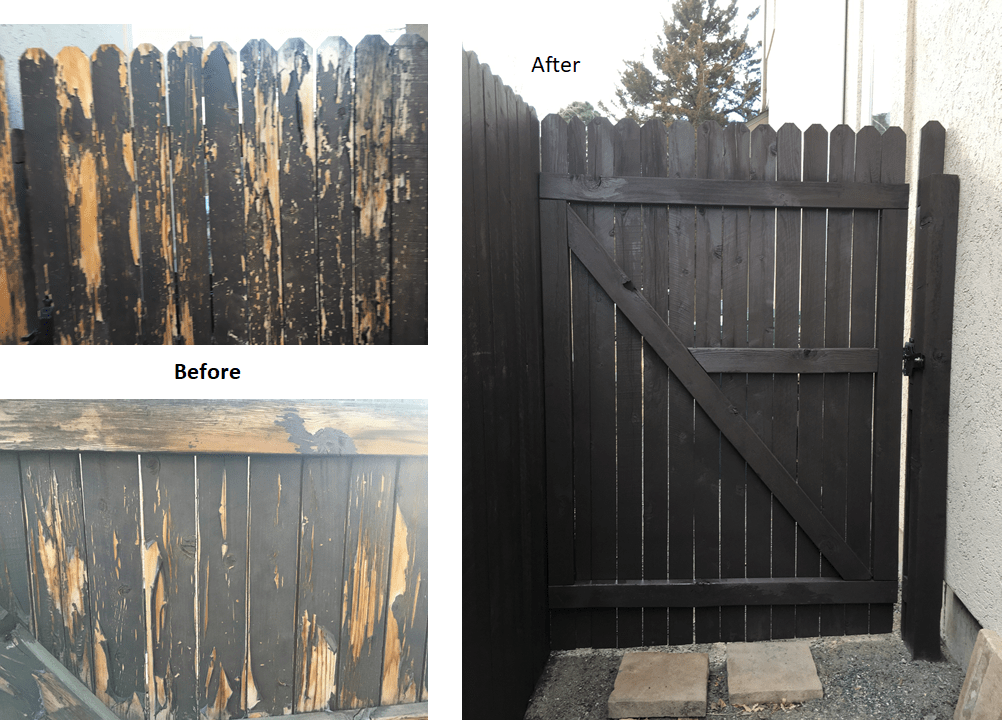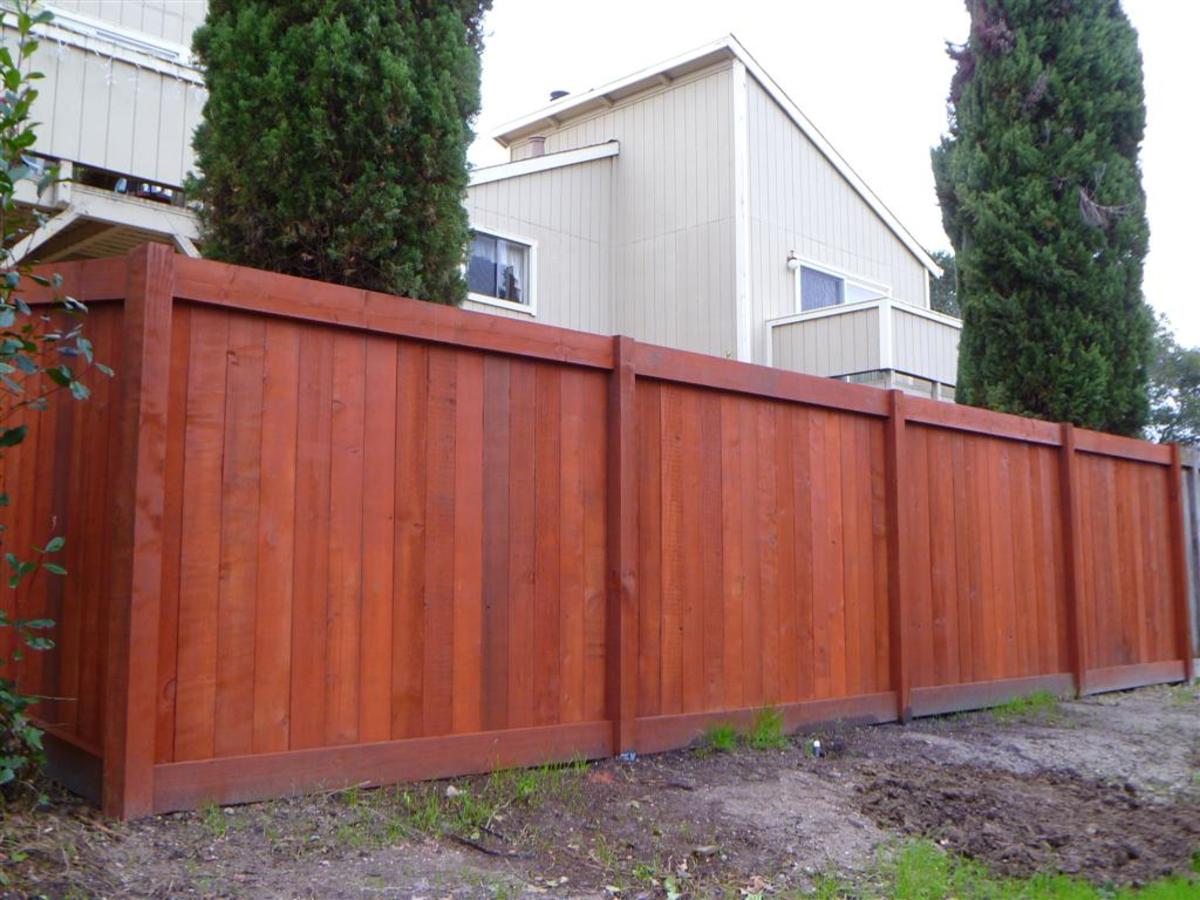Protect Your Financial Investment with Professional Fence Staining Solutions!
Protect Your Financial Investment with Professional Fence Staining Solutions!
Blog Article
Fencing Discoloration 101: Everything You Need to Know for a Stunning End Up
When it concerns enhancing the visual charm and lengthening the lifespan of your fencing, discoloration is a crucial element that requires attention to information. The process of fence discoloration entails greater than simply picking a shade and using it carelessly. From choosing the right sort of stain to thoroughly preparing the surface area and carrying out the application technique, every step plays a substantial function in attaining a remarkable coating. By recognizing the principles of fence discoloration, you can elevate the look of your outdoor area and guarantee the protection of your fencing versus numerous elements.
Picking the Right Stain
Identify the type of wood your fence is made of, as various timber varieties react differently to numerous stains. Some discolorations may call for more frequent reapplication than others, so choose a discolor that straightens with your maintenance choices. By taking these factors into account, you can choose a stain that not only protects your fencing but additionally enhances its total look.
Preparing Your Fencing
Before using the picked stain to your fencing, it is crucial to appropriately prepare the surface to make certain optimum outcomes and longevity. The very first action in preparing your fencing is to cleanse it completely.
Fining sand the fence is the next important action to make certain a smooth surface area for the stain to stick to. Utilize a medium-grit sandpaper to eliminate any type of harsh areas or old stain that may be peeling.
Last but not least, protect any kind of areas you don't wish to stain by utilizing painter's tape and plastic sheeting - Fence Staining - Fence Staining Nashville TN. This will certainly ensure tidy lines and protect against accidental discoloration of other surfaces. Correctly preparing your fencing will certainly not only enhance the last look yet additionally add to the longevity of the tarnish

Using the Spot
To accomplish an expert finish when discoloring your fencing, guarantee that you use the tarnish in even strokes complying with the wood grain instructions. Prior to starting, drink or stir the discolor thoroughly to mix any settled pigments. Utilizing a high-grade brush or a paint sprayer, begin applying the stain from the top of the fencing, functioning your method down to prevent drips.
Work in manageable sections to keep a damp edge and protect against lap marks. If making use of multiple containers of stain, mix them with each other to make sure shade consistency. Maintain an eye out for any drips or runs and smooth them out right away. After completing the whole fencing, allow adequate drying out time according to the manufacturer's directions prior to applying a 2nd layer if desired. Proper application is crucial to achieving a beautiful and long-lasting finish on your fencing.
Tips for an Expert End Up
Accomplishing a specialist surface on your tarnished fence requires precise attention to detail and adherence to finest techniques in application strategies. To make certain a stunning outcome, beginning by extensively preparing the fence surface. Clean the fence of any type of dirt, debris, or old discolor making use of a stress washer or a stiff brush and soapy water. Allow the fencing dry entirely before waging the staining process. Select a high-quality stain that is suitable for your fence type and climate problems. Before using the stain, protect bordering areas with plastic bed linen or ground cloth to stop unexpected spills or splatters.
When it comes to applying the tarnish, utilize a brush, roller, or sprayer for an also and consistent layer. Operate in workable areas to stay clear of drying lines and overlap damp sides to stop lap marks. Pay special attention to corners, edges, and hard-to-reach locations for consistent protection. Permit the tarnish to dry completely according to the producer's guidelines prior to taking into consideration a second coat. Adhering to these ideas will certainly aid you achieve a professional finish that enhances the elegance and longevity of your fence.
Upkeep and Care
Ensuring regular upkeep and correct care of your tarnished fence is crucial for preserving its look and architectural stability over time. To preserve the magnificent surface attained with discoloration, it is recommended to evaluate the fencing at the very least as soon as a year for any indicators of wear, damages, or discoloration. Addressing problems quickly can avoid them from escalating and needing extra extensive repairs.
Routine maintenance tasks include cleansing the fence with a mild cleaning agent and water to get rid of dirt, gunk, and mildew that can collect in time. Furthermore, trimming any type of plant life that comes right into call with the fence can prevent damage from overgrowth. Evaluate the stain for indicators of fading or wearing away, and consider applying an upkeep layer every 2-3 years to maintain the fencing looking fresh and dynamic.
Correct treatment also involves shielding the discolored fence from rough elements by thinking about elements such as sunlight exposure, moisture, and temperature level variations - Fence Staining. Using a protective sealer can even more enhance the long life of the tarnish and secure the wood from ecological damage. By following these upkeep methods, you can guarantee that your discolored fence remains an attractive and sturdy asset to your building for years to find
Conclusion

Report this page